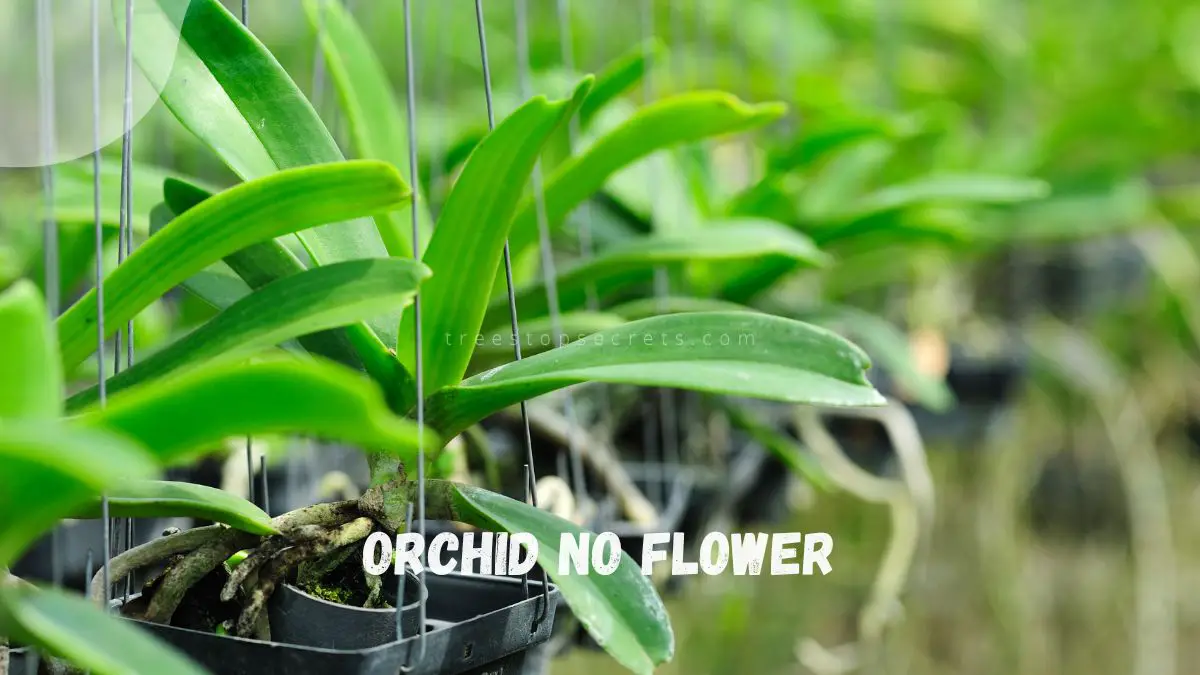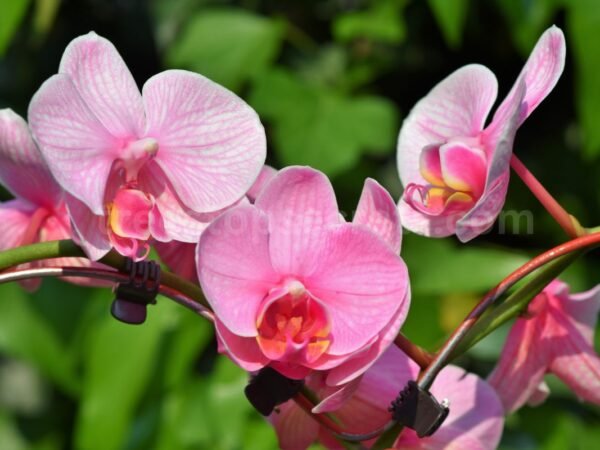Is your orchid not blooming as expected? Don't fret; you're not alone. Discover the secrets to reviving your orchid's bloom and bringing back its vibrant beauty with our expert tips. From proper watering techniques to ideal lighting conditions, we've got you covered. Say goodbye to the frustration of a non-flowering orchid and hello to a thriving, blossoming plant that will brighten up any space in your home. Get ready to unlock the potential of your orchid and enjoy a stunning display of colorful blooms all year round.
Why Orchids Stop Blooming
Signs of Orchids Ceasing to Bloom
Orchids stop blooming due to various reasons such as insufficient light, incorrect watering, or lack of nutrients. Signs of this include yellowing leaves, weak stems, and fewer flower buds forming.
The Vegetative Stage and Its Duration
During the vegetative stage, orchids focus on growing leaves and roots rather than producing flowers. This phase can last for several months to even a year, depending on the orchid species and environmental conditions.
Best Time for Orchids to Rebloom
The best time for orchids to rebloom is typically after they have gone through their vegetative stage. Providing the right care during this period, including proper watering, fertilizing, and adequate light exposure, can encourage the orchid to bloom again.
Light and Your Orchid
Adjust Lighting
Orchids require specific light conditions to bloom successfully. High light orchids, such as cymbidium orchids, need bright, indirect sunlight to thrive. Providing the right amount of light can significantly impact your orchid's blooming cycle.
Indirect Sunlight
Direct sunlight can be harmful to sensitive orchids, like phalaenopsis orchids. Placing your orchid in a spot with indirect sunlight is crucial for its growth. This ensures that your orchid receives the necessary light without getting burned or damaged.
Preventing Inadequate Light
Insufficient light can lead to poor blooming in many orchid species. To encourage healthy blooms, it's essential to monitor the light levels your orchid receives. Certain orchids, such as young orchids, may be more sensitive to light variations, requiring extra care.
Pros and Cons of Light Exposure:
- Pros:
- Optimal light conditions promote healthy blooming.
- Proper lighting enhances the overall growth of your orchid.
- Cons:
- Excessive direct sunlight can damage sensitive orchids.
- Inadequate light may result in poor blooming and stunted growth.
Root Health Matters
Prioritize Roots
Healthy roots are essential for orchid growth and blooming. Proper root health ensures the plant can absorb nutrients efficiently, leading to vibrant flowers.
Maintaining adequate root conditions involves using well-draining potting mix to prevent waterlogging. Overwatering can lead to root rot, a common issue in orchids.
Importance of Care
Root health directly impacts the overall health of an orchid plant. Without healthy roots, the orchid struggles to thrive and produce flowers. Regularly inspecting roots for any signs of damage or disease is crucial.
Proper aeration is key to maintaining root health. Orchids require good air circulation around their roots to prevent issues like suffocation or fungal infections.
Supporting Blooming
To ensure successful blooming, provide optimal conditions for root growth. This includes repotting orchids when needed to refresh the potting mix and prevent overcrowding.
Balanced watering is essential for root health. Orchids prefer a drying-out period between watering sessions to prevent waterlogged conditions that can harm the roots.
Encouraging New Growth
Trim Spikes
Trimming orchid spikes is a key practice to stimulate new growth. By cutting back spent flower spikes, you redirect the plant's energy towards producing fresh blooms. Use sterilized scissors and trim the spike above a node to encourage regrowth.
Provide Adequate Light
Orchids require sufficient light to thrive and bloom. Place them in bright, indirect sunlight to promote healthy growth. Avoid direct sunlight as it can scorch the leaves. Adjust the positioning based on the orchid's specific light requirements.
Maintain Proper Humidity
Maintaining proper humidity levels is crucial for orchids to flourish. They prefer humidity levels between 50-70%. Use a humidity tray or a humidifier to create an optimal environment for your orchid. This helps in promoting new growth and blooming.
Fertilize Regularly
Regular fertilization is essential for encouraging new growth in orchids. Use a balanced fertilizer specifically formulated for orchids. Apply the fertilizer at half strength every 2-4 weeks during the growing season to provide necessary nutrients for healthy development.
Repot When Necessary
Repotting orchids when they outgrow their current containers promotes new growth. Choose a slightly larger pot with good drainage to prevent root rot. Gently remove the old potting mix, trim any dead roots, and repot the orchid using fresh orchid mix.
Seasonal Blooms Explained
Orchid Blooming Cycles
Orchids, known for their exquisite beauty, follow specific bloom cycles dictated by the changing seasons. Understanding these cycles is crucial for nurturing healthy orchids. Different species of orchids have varying bloom periods, influenced by factors like temperature, light, and humidity. Orchids typically bloom once a year, but some may bloom more frequently.
Impact of Seasons
Seasons play a pivotal role in the blooming patterns of orchids. During spring and summer, when days are longer and temperatures are warmer, orchids enter their active growth phase. This period is ideal for encouraging new growth and preparing the plant for blooming. As fall approaches, orchids begin to slow down their growth rate in response to shorter days and cooler temperatures.
Correlation with Flowering
The correlation between seasons and orchid flowering is intricate. Orchids require a balance of light, water, and temperature to initiate blooming. For example, certain orchid species need a period of cooler temperatures to stimulate flowering. Others may require specific light conditions to bloom successfully. By understanding these correlations, orchid enthusiasts can optimize their care routines for vibrant blooms.
Natural Stimuli for Flowering
Light Exposure
Expose your orchids to indirect sunlight for 6-8 hours daily to mimic their natural habitat.
Creating a consistent light cycle is crucial for triggering flowering in orchids. Ensure they receive ample light without direct exposure to avoid leaf burn.
Temperature Variations
Daytime temperatures between 70-85°F and nighttime temperatures around 10-15°F lower can stimulate flower spikes.
Orchids thrive in temperature fluctuations, so maintaining this difference helps initiate the blooming process naturally.
Seasonal Changes
Mimic seasonal changes by adjusting watering and fertilization routines during fall and winter.
Reducing watering frequency and providing a slight drop in fertilizer levels can signal orchids to prepare for blooming in the upcoming season.
Orchid Care During Vegetative Cycle
Fertilizing Orchids
Feed orchids with a balanced fertilizer rich in nitrogen, phosphorus, and potassium during the vegetative cycle. This helps promote healthy orchid leaves growth and overall plant development.
Ensure the fertilizer is diluted to half or quarter strength to prevent root burn. Apply the fertilizer every two weeks to provide essential nutrients for optimal growth.
Proper Hydration
Hydrate orchids adequately by watering them when the potting mix feels slightly dry. Avoid overwatering as it can lead to root rot and other issues that may harm the plant.
It's crucial to maintain a consistent watering schedule to keep the orchid roots healthy and prevent dehydration. Consider using a humidity tray or a humidifier to create a suitable environment for your orchid indoors.
Trimming Spikes
Trim orchid spikes carefully after flowering to encourage new growth and prevent the plant from expending energy on spent blooms. Use clean, sharp scissors to make precise cuts without damaging the plant.
Avoid placing your orchid in dehydrating locations such as near heaters or air vents. Maintaining proper humidity levels is essential for the overall health of your plant.
Moving Plants for Better Blooms
Cooler Environments
Move orchids to cooler environments to facilitate better blooming. Provide a temperature drop of 10-15 degrees Fahrenheit at night for optimal reblooming.
Ensure appropriate temperatures during relocation. Avoid sudden temperature changes as they can shock the orchids, hindering the blooming process.
Return to Original Locations
After initiating reblooming, return the orchids to their original locations. Maintain consistent care routines to support continuous blooming cycles.
- Pros:
- Improved blooming outcomes
- Orchids adapt well to different environments
- Cons:
- Requires careful monitoring of temperature changes
- Potential stress on plants during relocation
Moving orchids for better blooms is a crucial practice in orchid care. By understanding the importance of environmental factors in blooming, you can ensure that your orchids thrive and produce beautiful flowers consistently.
Tips to Prompt Blooming Again
Provide Adequate Light
Ensure orchids receive enough light to encourage reblooming. Place them in a spot with bright, indirect light to stimulate flowering.
Maintain Proper Watering
Orchids need consistent watering to promote reblooming. Water them when the top inch of the soil feels dry to the touch.
Monitor Humidity Levels
Maintain adequate humidity around orchids to support healthy blooms. Use a humidifier or a humidity tray to create a suitable environment.
Choose the Right Fertilizer
Select a fertilizer with a higher middle number, such as 20-20-20, to encourage blooming. Apply it at half strength every two weeks.
Prune Appropriately
Regularly prune dead stems and leaves to promote new growth and flowering. Trim back spent spikes to redirect energy towards new blooms.
Monitor Temperature Changes
Keep an eye on temperature fluctuations, as they can affect orchid blooming. Maintain a consistent temperature range for optimal flowering.
Repot When Necessary
Repot orchids when you notice overcrowding or if the potting medium breaks down. Use fresh potting mix suitable for orchids.
Identify Last Bloom Period
Determine the last bloom period of your orchid to predict the next flowering cycle accurately. This helps in adjusting care routines accordingly.
Be Patient and Consistent
Remember that prompting orchid blooming again requires patience and consistency in care routines. Stick to a regular maintenance schedule.
Final Remarks
By understanding the reasons behind your orchid's lack of blooms and implementing the tips provided, you can effectively encourage new growth and prompt blooming again. Remember to ensure your orchid receives adequate light, maintain root health, and provide the necessary care during its vegetative cycle. Consider natural stimuli and seasonal variations to optimize blooming potential. Moving your plants strategically can also improve their chances of producing beautiful flowers.
Take charge of your orchid care routine by incorporating these practices to enjoy vibrant blooms year-round. With a little effort and attention to detail, you can create an environment that promotes healthy growth and abundant flowering in your orchids. Keep experimenting with different strategies until you find the perfect formula for your plants. Happy gardening!
Frequently Asked Questions
Why do orchids stop blooming?
Orchids may stop blooming due to factors like insufficient light, improper watering, or inadequate nutrients. Stress from changes in environment or temperature can also cause blooming cessation.
How can light affect my orchid's blooming?
Insufficient light can prevent orchids from blooming. Place them in a location with bright, indirect light to promote flowering. Avoid direct sunlight as it can scorch the leaves.
Why is root health important for orchid blooming?
Healthy roots are crucial for nutrient absorption and water intake, which directly impact blooming. Check roots for rot, ensure proper drainage, and repot when necessary to maintain root health.
What are natural stimuli that encourage orchid flowering?
Natural stimuli like temperature fluctuations, seasonal changes, and day-length variations can trigger orchids to bloom. Mimic these conditions by adjusting light exposure and temperature to promote flowering in your orchid.
How can I prompt my orchid to bloom again?
To encourage blooming, provide adequate light, proper watering, balanced fertilization, and maintain optimal humidity levels. Prune dead spikes, repot if needed, and be patient as orchids may take time to initiate new blooms.
Image Source: Paid image from CANVA





